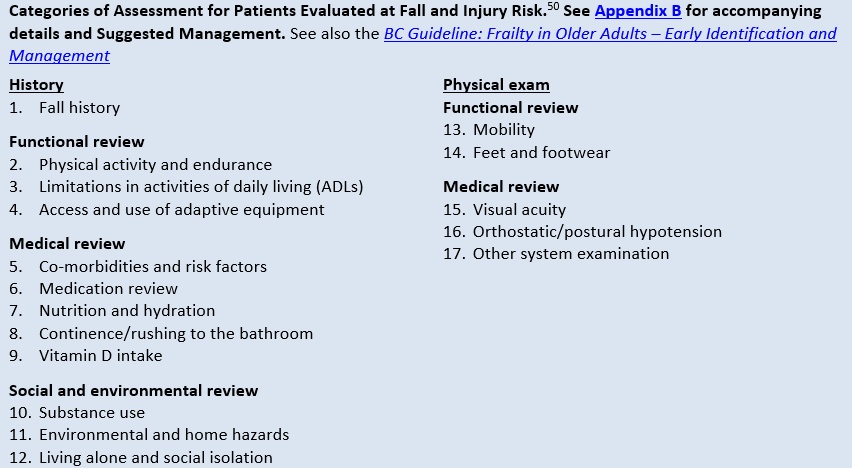Dementia Fall Risk Things To Know Before You Get This
Table of ContentsDementia Fall Risk Can Be Fun For EveryoneRumored Buzz on Dementia Fall RiskUnknown Facts About Dementia Fall RiskNot known Incorrect Statements About Dementia Fall Risk
A loss threat assessment checks to see exactly how most likely it is that you will fall. The evaluation generally consists of: This includes a collection of inquiries about your total health and if you've had previous falls or issues with equilibrium, standing, and/or strolling.Treatments are suggestions that may reduce your threat of dropping. STEADI includes 3 steps: you for your threat of falling for your risk factors that can be improved to attempt to protect against falls (for example, equilibrium problems, damaged vision) to minimize your risk of dropping by utilizing effective approaches (for example, offering education and learning and sources), you may be asked numerous inquiries including: Have you dropped in the past year? Are you fretted concerning dropping?
After that you'll take a seat once more. Your supplier will examine how much time it takes you to do this. If it takes you 12 secs or even more, it might mean you are at greater risk for an autumn. This test checks toughness and equilibrium. You'll sit in a chair with your arms crossed over your breast.
Relocate one foot halfway forward, so the instep is touching the huge toe of your various other foot. Move one foot fully in front of the other, so the toes are touching the heel of your various other foot.
Our Dementia Fall Risk Statements
Many falls occur as an outcome of several adding aspects; as a result, managing the risk of falling begins with recognizing the variables that add to drop threat - Dementia Fall Risk. A few of the most appropriate danger factors consist of: Background of previous fallsChronic medical conditionsAcute illnessImpaired stride and balance, lower extremity weaknessCognitive impairmentChanges in visionCertain risky medicines and polypharmacyEnvironmental elements can also raise the danger for drops, including: Inadequate lightingUneven or harmed flooringWet or unsafe floorsMissing or damaged handrails and order barsDamaged or poorly equipped equipment, such as beds, mobility devices, or walkersImproper use assistive devicesInadequate guidance of individuals staying in the NF, consisting of those who show aggressive behaviorsA successful fall threat administration program needs a complete medical analysis, with input from all members of the interdisciplinary group

The care plan need to additionally consist of interventions that are system-based, such as those that advertise a safe atmosphere (ideal illumination, hand rails, get hold of bars, etc). The performance of the interventions ought to be evaluated regularly, and the treatment strategy revised as essential to reflect changes in the autumn threat evaluation. Executing a loss risk administration system utilizing evidence-based best method can lower the prevalence of drops continue reading this in the NF, while limiting the capacity for fall-related injuries.
Some Known Details About Dementia Fall Risk
The AGS/BGS guideline suggests screening all grownups matured 65 years and older for loss risk each year. This screening is composed of asking people whether they have fallen 2 or even more times in the previous year or looked for medical focus for a fall, or, if they have not fallen, whether they feel unstable when strolling.
Individuals who have fallen once without injury should have their balance and gait evaluated; those with gait or balance abnormalities should obtain added analysis. A background of 1 autumn without injury and without stride or balance issues does not warrant further assessment past continued annual loss threat testing. Dementia Fall Risk. An autumn risk analysis is needed as part of the Welcome to Medicare examination
.png)
The Main Principles Of Dementia Fall Risk
Documenting a falls history is one of the top quality indications for fall avoidance and administration. copyright medications in specific are independent forecasters of drops.
Postural hypotension can commonly be reduced by lowering the dose of blood pressurelowering medications and/or stopping medicines that have orthostatic hypotension as an adverse effects. Use above-the-knee assistance pipe and copulating the head of the bed boosted might additionally minimize postural decreases in high blood pressure. The suggested components of a fall-focused physical exam are displayed in Box 1.

A my sources TUG time higher than or equal to 12 seconds recommends high loss click here for info danger. The 30-Second Chair Stand examination analyzes reduced extremity stamina and balance. Being not able to stand from a chair of knee height without making use of one's arms indicates increased loss threat. The 4-Stage Equilibrium test evaluates static balance by having the individual stand in 4 positions, each progressively extra difficult.